Important Notice
After an update on 4 May, WordPress stopped sending post notifications. We have been aware of the issue and are working on rectifying it. You can always visit the blog by visiting or bookmarking www.BIRDSASART-Blog.com.
Supporting My Efforts Here
If you enjoy and learn from the blog, please consider using one of my affiliate links when purchasing new gear. It will never cost you a single penny. To support my effort here, please order from B&H by beginning your search here. Or, click here, to order from Bedfords and enter the discount code BIRDSASART at checkout to receive 3% cash back to your credit card and enjoy free Second-Day Air Fed-Ex shipping. It is always best to write for advice via e-mail.
In many cases, I can help you save some serious dollars. And/or prevent you from purchasing the wrong gear.
Summer On Long Island
Take a peek at the July and August Nickerson Beach (& JBWR) IPT offerings below and consider joining us to learn a ton, make lots of great images, and improve your image processing skills.
Saturday’s White Wading Bird
The comments at the last blog post pretty much covered all the bases. The bird was a young Little Blue Heron. Cliff Beittel noted: pale green-yellow legs, two-toned bill, base of bill relatively thick.
In addition, this bird is much stockier than a similarly aged Snowy Egret that would have a somewhat longer, slimmer bill that changes from yellow to black with some yellow as it gets ready to leave the nest. And young Cattle Egrets have black bills and black legs and are stockier still with block-shaped heads. A close look reveals that either the primary or tail tips have a bit of slate blue.
I am pretty sure that the bird in the photo is just about six weeks old (give or take a day or two). From The Birds of North America:
DAY 35 — Capable of sustained flight. Observed to perform Greeting Ceremony with siblings when returning to nest.
DAY 42 — Regularly leaves the colony in morning to forage in nearby wetlands.
Note that the changes as young little blues go from nearly all white to white mottled with patches of slate blue are the result of normal aging and development. At six months to a year, most first year Little Blue Herons have a splotchy, pied plumage. Thus, they are not “morphs.” Birds like Reddish Egrets and Snow Geese that have different forms that are the result of genetics are properly called morphs.
What’s Up?
Despite a brisk east wind on a sunny Monday morning, I had too much packing to do to get ready for my Colorado trip.
Today is Tuesday 18 June 2024 and I still have a ton to do as Jim will be driving me to the airport tomorrow a o-dark hundred. Whatever you are doing, I hope that you too choose to have a great day.
Please remember to use the B&H links that are found on most blog pages and to use the BIRDSASART discount code at checkout when purchasing your new gear from Bedfords to get 3% back on your credit card and enjoy free second-day air FedEx. Please, also, consider joining a BAA IPT. You will be amazed at how much you will learn!
If an item — a Delkin flash card, or a tripod head — for example, that is available from B&H and/or Bedfords, is also available in the BAA Online Store, it would be great, and greatly appreciated, if you would opt to purchase from us. We will match any price. Please remember also to use my B&H affiliate links or to earn 3% cash back at Bedfords by using the BIRDSASART discount code at checkout for your major gear purchases. Doing either often earns you free guides and/or discounts. And always earns my great appreciation.
|
|
|
This image was created on 19 August 2018. Crouching just a bit, I used the tripod/Mongoose M3.6 Action Head- supported Nikon 600mm f/4 VR lens, the 1.4X teleconverter, and the Nikon D850. ISO 800: 1/100 sec. at f/6.3 (stopped down 1/3 stop) in Manual mode. AWB at 9:33:08am on cloudy morning. Be sure to click on the image to see the larger, sharper higher-res version. American Oystercatcher feeding young |
Oystercatchers at Nickerson Beach
There is surely no better place on the planet to photograph American Oystercatcher than Nickerson Beach, Lido Beach, Long Island, NY. Many dozens of pairs nest on the white sands at Lido and Long Beach. Their nesting is staggered so that in early August you might see an adult on eggs, small chicks, medium-sized chicks, large chicks, and fledged young like the bird on our left in the image above. Be sure not to stress the chicks so that when the researchers chase them up and down the beach with long handled crab nets they will have the energy to survive this ordeal. Mid-August and beyond afternoons finds flocks of as many as several hundred adult and young oystercatchers roosting on the sand as they get ready to fly south as the season progresses.
Notice the juvie’s dark eye and the dark tip of its bill. The neatly edged feathers typical of all young shorebirds are quite worn on this bird; it might have hatched as early as April. Most mornings find more than a few oystercatcher families foraging at the edge of the surf for mole crabs and other morsels.
Your Call?
What single thing could I have done in the field that would have drastically improved today’s featured image. What would the main improvement have been?
What else might I have done to improve the image?
I came across this very old image in a Nickerson 2018 image folder. I liked the raw file but was aghast when I looked at my first optimized version. It was horrible. So, I deleted that and re-did the image starting from scratch using my current workflow as detailed in the Digital Basics III Video Series. Much, much better!
|
|
Join me to photograph Black Skimmers, Common Terns, American Oystercatchers, and more! |
The Summer 2024 Nickerson Beach 3 1/2 day Terns, Skimmers, & Oystercatchers IPTs
Nickerson Beach IPT #1: July 29 – August 1, 2024. 3 1/2 days: Afternoon session on MON 29 July through the full day on THURS 1 August, 2024: $2099.00. Limit: 6. Openings: 5
Nickerson Beach IPT #2: August 5-8 2024. 3 1/2 days: Afternoon session on MON 5 August through the full day on THURS 8 August, 2024: $2099.00. Limit: 6. Openings: 5.
Join me at Nickerson Beach Park this summer to photograph Black Skimmers, Common Terns, and American Oystercatchers. The trip is timed so that we should get to photograph tiny chicks as well as fledglings. There will be lots of flight photography including adults flying with baitfish and mole crabs. Creating great images of the chicks being fed is a challenge but I will do my best to help you toward that end. We will get to photograph a variety of breeding behaviors including courtship, sitting on (incubating) eggs, chick feeding, and more. We may get to photograph pre-dawn and early evening blastoffs. There is generally great afternoon skimmer flight photography that includes frequent midair battles sunny days. And with luck, we might even see a few tiny chicks in addition to fledged and flying young. We will also get to photograph the life cycle of American Oystercatcher. This will likely include nests with eggs and small chicks, young being fed, and surely a few fledglings.
Nesting Piping Plover is also possibly. There will be lots of gulls to photograph; most years I am able to find a few lesser black-backeds of varying ages in addition to the Herring, Ring-billed, and Great Black-backed Gulls. You will learn to identify and age the various gull species. There will likely be some Willets feeding along the surf and with luck we might get to photograph a handsome juvenile or two. In addition to the locally breeding shorebirds, we will likely get to see some southbound migrant arctic-and sub-arctic breeding shorebird species such as Sanderling, Semipalmated Plover, and maybe even Red Knot.
|
|
Clockwise from upper left around and back to center: Black Skimmer pair with chick; Black Skimmer fledgling skimming; Black Skimmer with large needlefish; Black Skimmer large chick; Black Skimmer fledgling taking flight; Black Skimmer adult with killifish; Black Skimmer adult landing near nest; Black Skimmer in midair chase; and Black Skimmers at dawn in the red light district. |
Activities
Morning sessions will run from pre-dawn till about 9:00 or 9:30am, roughly 3 1/2 hours. Afternoon sessions will run from 5:30 till sunset (assuming that entry policies are as they were in 2023.
Many folks head home feeling that while our time in the field was fabulous and productive, that the working brunch sessions were even more valuable. During image review you will learn to select the best images from several thousand made with your 20- and 30 fps (or 120 fps!) camera bodies. And we will process a few images and distribute the screen capture videos for you to learn from after the trip. And all IPTs offer follow-up image critiques.
Change your life: sign up for this IPT today. Please shoot me an e-mail if you would like to explore the possibility of renting some Sony gear (including an a1) from me.
|
|
Clockwise from upper left around and back to center: Adult American Oystercatcher foraging at sunrise; Adult American Oystercatcher posing on clean sand; predawn skimmer flock blur; Black Skimmer large chick; Black Skimmer landing at nest on cloudy day; Black Skimmer large chick; Black Skimmer sunrise group blur; Black Skimmer adult with Atlantic Silversides; juvenile Semipalmated Plover, and photographer with oystercatcher family. |
Some of What You Will Learn on a Nickerson Beach IPT
- 1- The basics and fine points of digital exposure; how to get the right exposure every time after making a single test exposure (or before if you are using SONY gear).
- 2- How and why to work in Manual mode (even if you’re scared of it).
- 3- How to approach free and wild birds without disturbing them.
- 4- Lots about bird behavior and how to use that knowledge to help you create better images.
- 6- To spot the good and great situations and to choose the best perspective.
- 7- To see, evaluate, and understand the light.
- 8- To design pleasing images by mastering your camera’s AF system.
- 9- And perhaps most importantly, to evaluate wind and sky conditions and understand how they affect bird photography. You will learn where and when to be (and why).
- 10- More than you could ever imagine.
|
|
Clockwise from upper left around and back to center: Black Skimmer pair with chick; Common Tern landing at nest with small baitfish; large Common Tern chick on pristine beach; American Oystercatchers courtship flight; Common Tern with pipefish; Common Tern fledgling; American Oystercatcher on eggs in high wind; American Oystercatcher nest with three eggs; and Black Skimmer midair battle. |
The Details
We will be on the beach very early to enjoy sunrise. The morning sessions will run about 3 1/2 hours. Afternoon sessions will begin at 5:30 and run till sunset. There is never a set schedule on an IPT — we adapt to the conditions. On cloudy mornings with the right wind, we may opt to photograph till 11:30am or so and skip the afternoon session. That especially when the afternoon weather is looking iffy.
There will be a Photoshop/Image Review session before and after brunch (included) each full day. That will be followed by Instructor Nap Time. Each of these IPTs will run with only a single registrant as I do not like disappointing anyone. The best airports are JFK or Islip (if you have lots of Southwest points). Once you register, you will receive an e-mail with lodging information. Do know that it is always best if IPT folks stay in the same general area (rather than at home or at a friend’s place a good distance away).
Folks attending this IPT will be out in the field ridiculously early and stay out late to take advantage of sunrise and sunset colors; this is pretty much a staple on almost all BIRDS AS ART Instructional Photo-Tours. Doing so will often present unique photographic opportunities, opportunities that will be missed by those who need their beauty rest and those who need to get home for a proper dinner. I really love it when I am leaving the beach at 9:00am on a sunny morning after a great session just as a carful or two of well-rested photographers are arriving … We may be getting our feet wet on occasion, especially in the mornings, but those who wish to keep their feet 100% dry can do so.
Your $699 deposit is due now. Credit cards are OK for that. You can register by calling Jim or Jennifer during weekday business hours at 863-692-0906 with a credit card in hand. Once you leave a deposit, you will receive an e-mail with your balance statement and instructions for sending your balance check. Those who wish to pay for the trip in one fell swoop via check may do so by making the check out to BIRDS AS ART and then mailing it to BIRDS AS ART, PO BOX 7245, Indian Lake Estates, FL 33855. You will receive a confirmation e-mail with detailed instructions, and clothing and gear advice right after you register. Please shoot me an e-mail if you plan to register or if you have any questions.
IPT veterans and couples or friends signing up together may e-mail for discount information.
|
|
Join me on the COMBO IPT this coming August to photograph adult and juvenile shorebirds at the East Pond at Jamaica Bay Wildlife Refuge, Queens, NY.Clockwise starting from the upper left back to center: juvenile Lesser Yellowlegs; adult Semipalmated Plover; fresh juvenile Semipalmated Sandpiper; fresh juvenile Least Sandpiper; fresh juvenile Stilt Sandpiper; fresh juvenile Short-billed Dowitcher; worn, molting adult Semipalmated Sandpiper; worn, molting adult White-rumped Sandpiper; and juvenile (left) and worn, molting adult Greater Yellowlegs. |
The Combo IPT — East Pond, JBWR/Nickerson Beach: August 17 – 20, 2024. SAT August 17 through the morning session on TUES 20 August 2024. 3 1/2 days: $2199.00. Limit: 6. Openings: 5.
Join me for four mornings at the famed East Pond, Jamaica Bay Wildlife Refuge, Queens, NY (conditions permitting) to photograph southbound migrant shorebirds and for three afternoons to photograph beach nesting birds. The window for photographing juvenile shorebirds in fresh plumage is very narrow and this trip will of course get you to the right spot at the exact right time. You will learn to identify and age the shorebirds and to photograph them (at ground level). I will gladly share everything that I have learned during the 46 years I have been visiting the pond. Heck, I started late. After too many years of mismanagement, the gate valve at the north end of the East Pond has finally been repaired properly; water levels should be perfect this summer. If it is not, we will spend our mornings at Nickerson.
Afternoons (and mornings as well) at Nickerson Beach Park are superb in mid-August for photographing Black Skimmers, Common Terns, and American Oystercatchers with young of all ages. There will be lots of fledged chicks by mid-August, lots of flight including adults flying with baitfish and mole crabs, and excellent chances to photograph both chick feeding and predation by gulls. The Great Black-backed Gulls see the young skimmers as potato chips. We should get to photograph the evening skimmer blastoffs. On hot sunny days, there is still great afternoon skimmer flight photography that includes frequent midair battles.
There will be lots of terns (mostly Common Terns) and gulls to photograph; most years I am able to find a few Lesser Black-backed Gulls of varying ages in addition to the Herring, Ring-billed, and Great Black-backed Gulls. You will learn to identify and age the various gull species. There will likely be some Willets feeding along the surf and with luck we might get to photograph a handsome juvenile or two. In addition to the locally breeding shorebirds, we will likely get to see some southbound migrant arctic-and sub-arctic breeding shorebird species such as Sanderling, Semipalmated Plover, Semipalmated Sandpiper, and maybe even Red Knot. And we might encounter large, swirling flocks of Sanderling in flight over the ocean.
|
|
Join me this August to photograph at the East Pond at JBWR in the mornings (conditions permitting) and at Nickerson Beach in the afternoons.Clockwise starting from the upper left back to center: Marbled Godwit (likely in juvenal plumage); Wilson’s Phalarope in first winter plumage; Black Skimmer adult in flight over the Atlantic; juvenile American Oystercatcher foraging surf; adult Lesser Black-backed Gull; Black Skimmer attacking tiny chick; Killdeer in fresh juvenal plumage; Least Sandpiper in fresh juvenal plumage ruffling; and juvenile Lesser Yellowlegs and mixed shorebird flock. |
Morning sessions at the East Pond will run from just before dawn till about 9:00 or 9:30am. If the afternoon weather forecast is looking ominous, we may decide to photograph until after 11:00am and cancel the afternoon session. Afternoon sessions at Nick will run from 5:30 till sunset (assuming that entry policies are as they were in 2023).
Many folks head home feeling that while our time in the field was fabulous and productive, that the working brunch sessions were even more valuable. During image review you will learn to select the best images from several thousand made with your 20- and 30 fps (or 120 fps!) camera bodies. In addition, we will process some participant images and distribute the screen-capture videos for you to learn from after the trip. All IPTs offer follow-up image critiques.
Change your life: sign up for this IPT today. Please shoot me an e-mail if you would like to explore the possibility of renting some Sony gear (including an a1) from me.
|
|
Clockwise from upper left around and back to center: Adult American Oystercatcher foraging at sunrise; Adult American Oystercatcher posing on clean sand; predawn skimmer flock blur; Black Skimmer large chick; Black Skimmer landing at nest on cloudy day; Black Skimmer large chick; Black Skimmer sunrise group blur; Black Skimmer adult with Atlantic Silversides; juvenile Semipalmated Plover, and photographer with oystercatcher family. |
Some of What You Will Learn on the COMBO IPT
- 1- The basics and fine points of digital exposure; how to get the right exposure every time after making a single test exposure (or before you make even a single image if you are using SONY gear).
- 2-How to get low and super low
- 3- How and why to work in Manual mode (even if you’re scared of it).
- 4- How to approach free and wild birds without disturbing them.
- 5- Lots about bird behavior and how to use that knowledge to help you create better images.
- 6- To spot the good and great situations and to choose the best perspective.
- 7- To see, evaluate, and understand the light.
- 8- To design pleasing images by mastering your camera’s AF system.
- 9- And perhaps most importantly, to evaluate wind and sky conditions and understand how they affect bird photography. You will learn where and when to be (and why).
- 10- To identify and age a variety of shorebird, tern, and gull species.
- 11- More than you could ever imagine.
The Details
There will be a Photoshop/Image Review session during and after brunch (included) each full day. That will be followed by Instructor Nap Time. This IPT will run with only a single registrant as I do not like disappointing anyone. The best airports are JFK or Islip (if you have lots of Southwest points). Once you register, you will receive an e-mail with lodging information. Do know that it is always best if IPT folks stay in the same general area (rather than at home or at a friend’s place a good distance away).
Folks attending this IPT will be out in the field ridiculously early and stay out late to take advantage of sunrise and sunset colors; this is pretty much a staple on almost all BIRDS AS ART Instructional Photo-Tours. Doing so will often present unique photographic opportunities, opportunities that will be missed by those who need their beauty rest and those who need to get home for a proper dinner. I really love it when I am leaving the beach at 9:00am on a sunny morning after a great session just as a carful or two of well-rested photographers are arriving … We may be getting our feet wet on occasion, especially in the mornings, but those who wish to keep their feet 100% dry can do so.
Your $699 deposit is due now. Credit cards are OK for that. You can register by calling Jim or Jennifer during weekday business hours at 863-692-0906 with a credit card in hand. Once you leave a deposit, you will receive an e-mail with your balance statement and instructions for sending your balance check. Those who wish to pay for the trip in one fell swoop via check may do so by making the check out to BIRDS AS ART and then mailing it to BIRDS AS ART, PO BOX 7245, Indian Lake Estates, FL 33855. You will receive a confirmation e-mail with detailed instructions, and clothing and gear advice right after you register. Please shoot me an e-mail if you plan to register or if you have any questions.
IPT veterans and couples or friends signing up together may e-mail for discount information.
Typos
With all blog posts, feel free to e-mail or to leave a comment regarding any typos or errors.

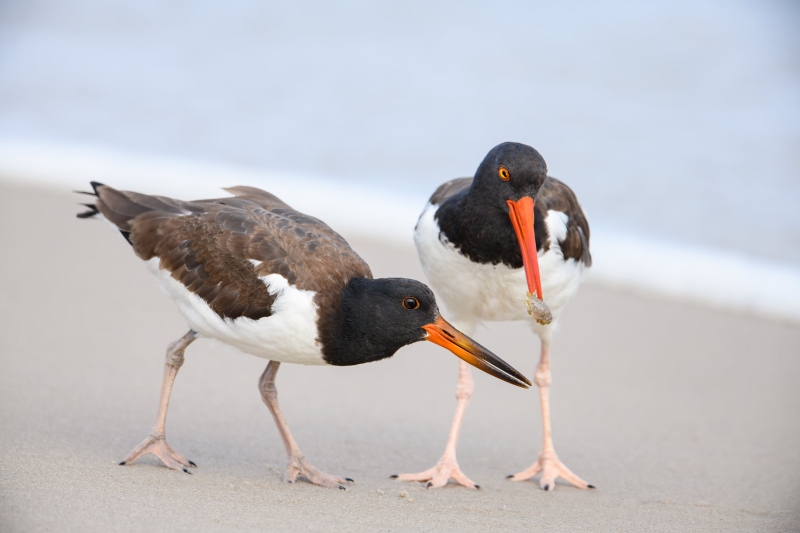
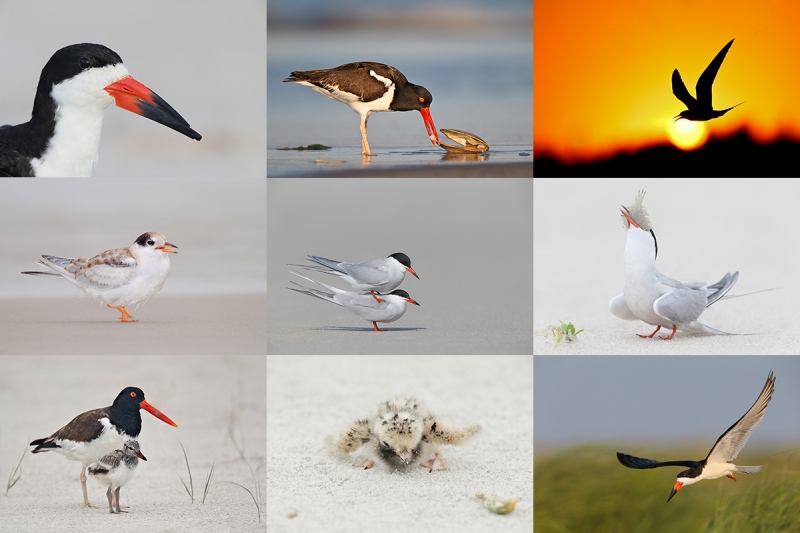
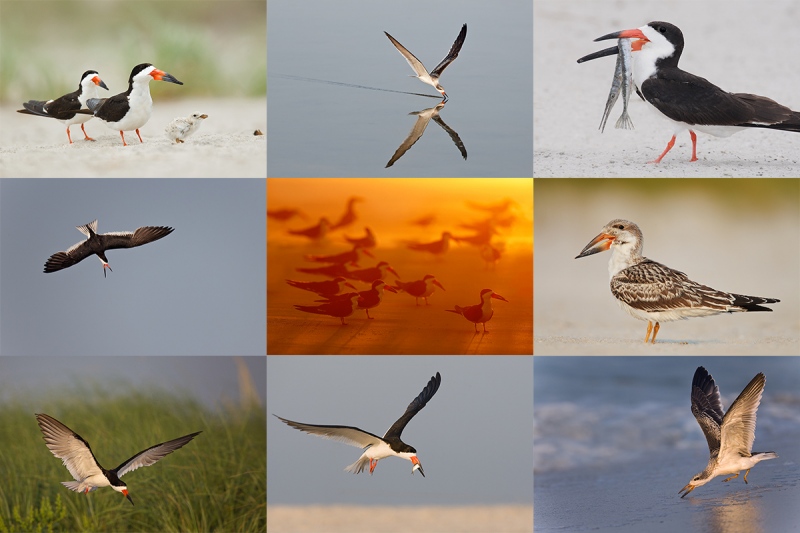
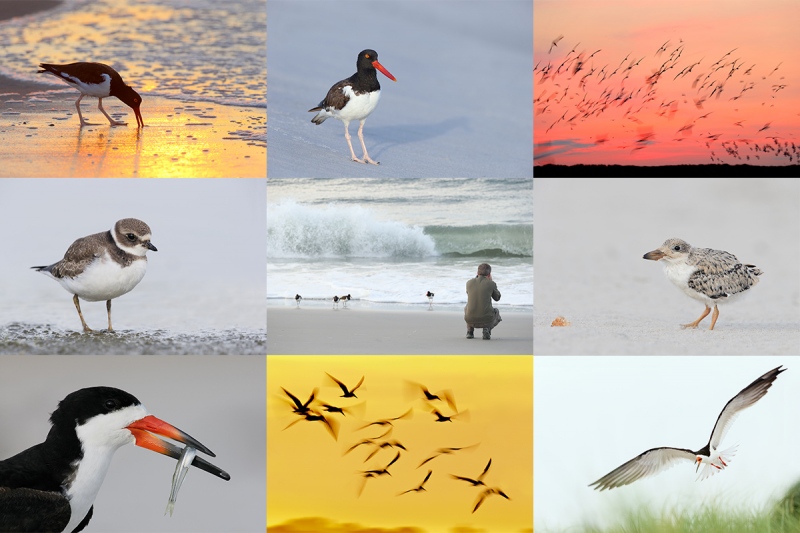
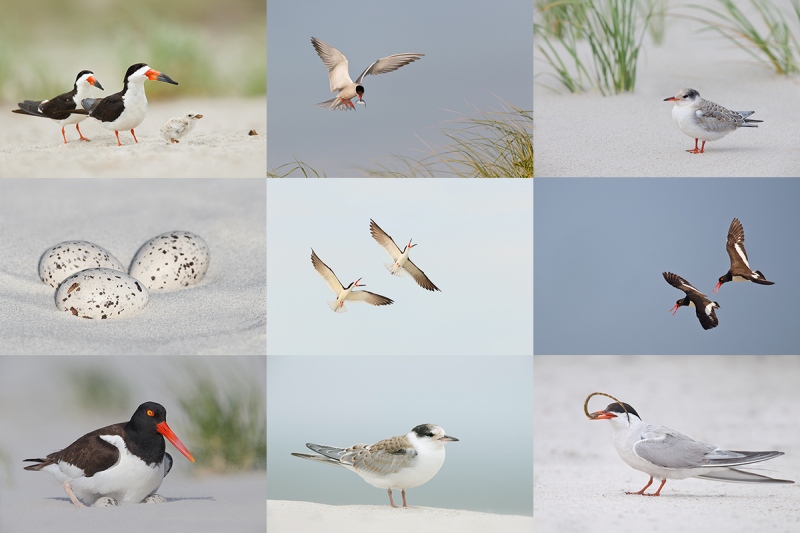
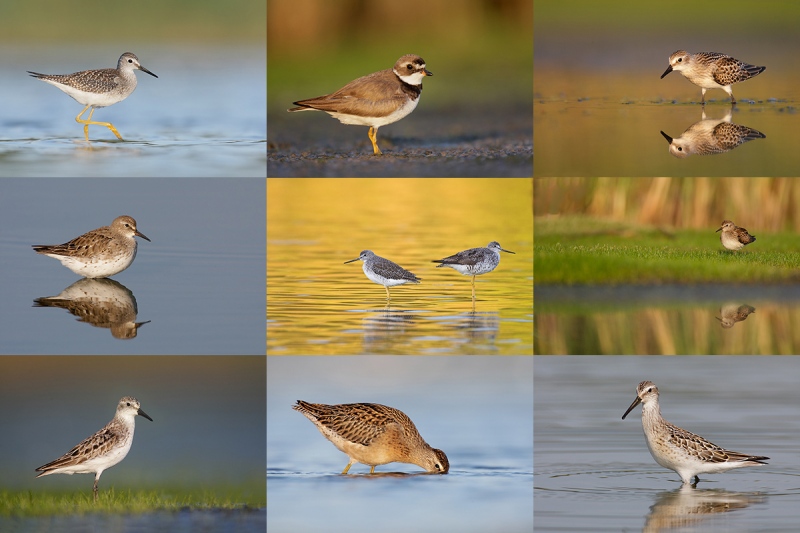
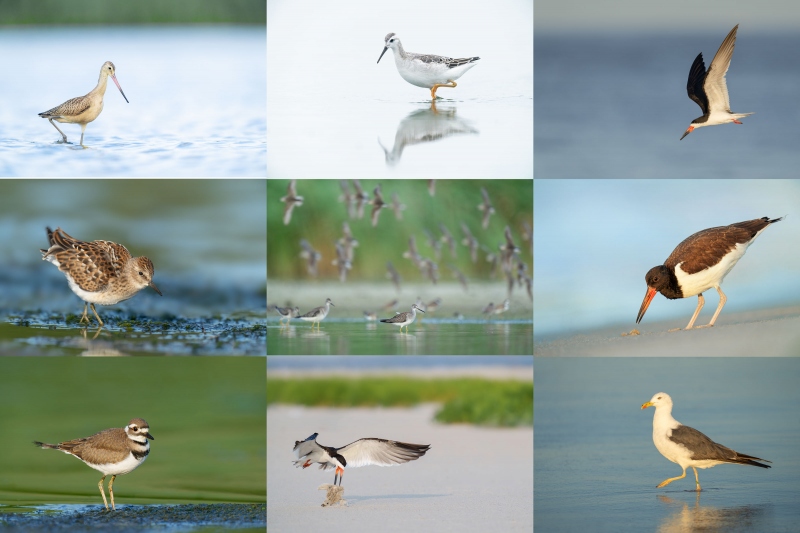













“Be sure not to stress the chicks so that when the researchers chase them up and down the beach with long handled crab nets they will have the energy to survive this ordeal.”
Too true, and brought a healthy laugh. I’m guessing you’d prefer to have had the camera lower, and/or the birds higher in the frame, and maybe higher ISO and shutter speed. In terms of processing, there’s some vignetting that can be easily fixed in Photoshop.
Thanks, Cliff. Ironic humor intended. Good stuff but you missed another possibility.
I had not noticed the vignetting. And I was not even wide open. I should have mentioned that the original NEF file was pre-RawDigger and thus almost one full stop under-exposed. Ignorance was bliss.
with love, artie